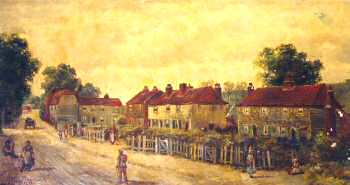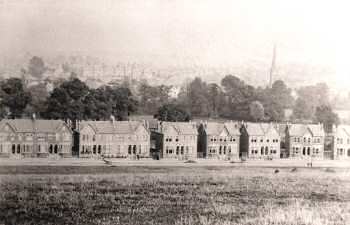History of Ladywell
The Lady Well, which was used until the 1850s, was beside Ladywell Road, near the approach to the station. It was probably a holy well dedicated to the Virgin Mary, as is Lewisham�s ancient parish church, nearby. The well is marked and named on a map of 1592. The Bridge House Farm was the only dwelling here until the second half of the eighteenth century, so �Bridge House� was sometimes used to designate the area.
Ladywell is an example of what might be called a wasteland or squatter village. It grew from next to nothing in the 1780s, almost entirely as the result of piecemeal enclosure of the wide strips of waste which bordered what is now Ladywell Road. Parishioners wishing to enclose small pieces of this land as sites for cottages applied to the manor court. They were granted leases usually of 21 years, and when they expired the cottagers became the direct tenants of the lord of the manor.
At that time there was only a wooden footbridge linking Ladywell to Lewisham High Street and the church. The brick bridge was built by the parish vestry in 1830.
The next stage in development came with the opening of Ladywell Station in 1857. Church Grove and the terraces to either side of it in Ladywell Road were built in the following year, which also saw the opening of Ladywell Cemetery. Railway Terrace, Prospect Place, and Mercy Terrace, close to the station, followed c.1870.
The major expansation of Ladywell began in the 1880s, with the beginning of work on Vicars Hill, which opened up a wide new area for the builders. The old wooden wasteland cottages were cleared in the 1890s and replaced by Gillian Street and the shops known as The Parade. The Bridge House Farm was demolished c.1899, and this last remaining Ladywell farmland was covered with the houses in Chudleigh Road and its offshoots over the next thirty years. This slow progress was perhaps because the popularity of Ladywell was checked in 1900 when the Poor Law Union of Bermondsey opened a workhouse here for its elderly poor, later called Ladywell Lodge.









